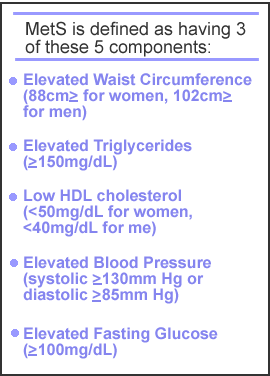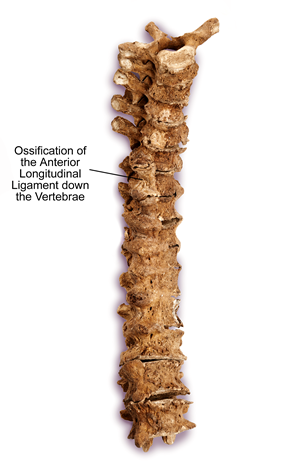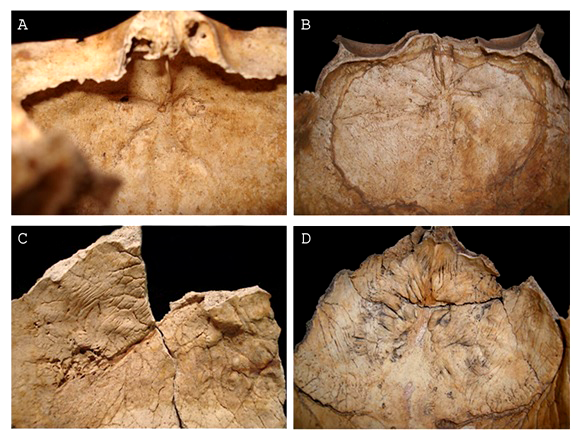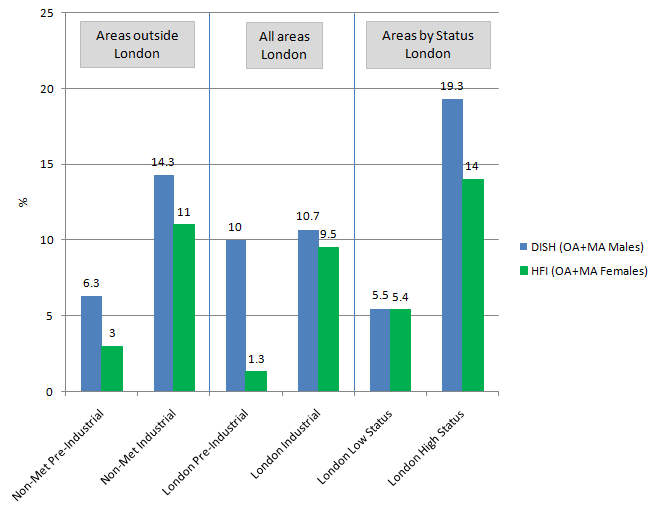Evidence for obesity in the past
We can’t estimate weight directly from the human skeleton. However, two conditions that we can detect in the human skeleton are thought likely to be part of MetS or metabolic syndrome.
MetS refers to a number of clinical symptoms occurring together, including excess body fat around the waist, high blood sugar, increased blood pressure and abnormal cholesterol. MetS results in a suite of biochemical and hormonal interactions within the body and is closely associated with diabetes.

Two conditions that we can detect in the human skeleton are thought likely to be part of MetS or metabolic syndrome.
Causes of MetS are thought to include obesity, stress, genetics, ageing, sedentary life style, low physical activity, disrupted sleep, mood disorders and excessive alcohol use. It is most often found in older adults. Diet is a key factor in MetS, including a high sugar consumption and a diet heavily based on processed food. A lot of these lifestyle factors are associated with industrialisation.
MetS in human skeletons
A = Normal. B, C, D = HFI
The second condition is called Diffuse Idiopathic Skeletal Hyperostosis (DISH). DISH is seen most commonly in old age males and has been clinically linked to MetS. It consists of a thick, candle-wax like bony bridge in the spine, fusing blocks of vertebrae together. Higher rates of insulin resistant diabetes has been seen in older males with DISH as have rates of increased body mass index (BMI). This seemingly stimulates the body to produce excess new bone, leading to ossification of soft tissue ligaments.

Vertebrae with DISH
The skeletal evidence provided an interesting picture of patterns of obesity in the past. In London, rates of DISH were much more consistent in males over time, with industrialisation having little impact and rates remaining at about 10% of males affected. Outside of London, however, the rate of DISH in males more than doubled, from 6.3% to 14.3%.
For females, HFI increased significantly with industrialisation both in London and in the more rural towns and villages outside the city, with rates being almost 4.5 times higher in the Industrial period.
What was key to understanding this rise of MetS and likely obesity in the Industrial period was social status. Rates of both DISH and HFI were much more frequent in high status populations, such as in Chelsea, Mare Street in Hackney and the well-off parts of Farringdon. Much lower rates were seen in industrial Bow, Bethnal Green and poorer areas of Farringdon.










